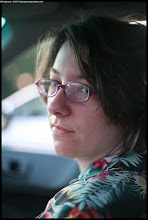Tuesday, July 23, 2013
The Riddle of the Labyrinth
The Quest to Crack an Ancient Code, by Margalit Fox.
In 1900, archaeologist Arthur Evans began digging at Knossos in Crete, and within days had uncovered a cache of clay tablets inscribed with what he was sure were the written records of the Palace of Minos. The writing system resembled no other known to scholars; Evans drew a distinction between an earlier version of the script, which he designated Linear Script Class A, and a more elaborate later version, Linear Script Class B. Neither was deciphered in his lifetime.
Linear A remains a mystery to this day; there just isn't enough available text for analysis. But Linear B was finally cracked in 1952 by Michael Ventris, who was not an archaeologist, a linguist, a classicist, or indeed an academic of any kind; he was a professional architect, and a passionate amateur of the problem of the script.
A third figure in the decipherment who isn't as well known today was Alice Kober, an American professor of classics who also worked on the script in her spare time, drawing up meticulous card files (written on homemade index cards filed in cigarette cartons) about each of the syllabic characters on its own and in relation to other characters. She might have been the one to decipher the script instead of Ventris, had she not died young in 1950, at the age of 43; Ventris leaned heavily on her published work, especially her preliminary grid of a few of the characters that she had identified as sharing the same consonants and vowels.
Of course, depending on your level of linguistic and/or historical geekery, you may not have heard of any of these people. Evans was the only one whose name sounded vaguely familiar to me before I read this book; I knew there was a Linear A script from Crete which had not been deciphered, and a Linear B script which had, but I couldn't have told you who was responsible. This book was fascinating to me all the same, detailing the immense difficulty of figuring out an unknown script in an unknown language and the immense amount of work involved in the pure logical analysis of the characters, especially by Kober. Great stuff; it makes me want to dig up the syllabary I invented for a class assignment in morphology twenty-odd years ago and revise the spelling rules; or possibly figure out how to write English in Linear B.
Subscribe to:
Post Comments (Atom)


No comments:
Post a Comment